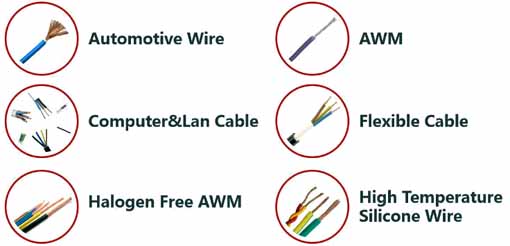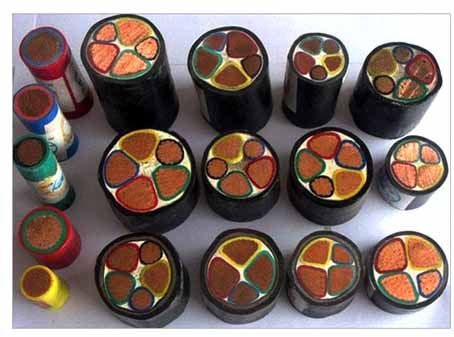Application standards for wires and cables

The designer should design, select and lay the flame-retardant cable according to the specific characteristics of the wire and cable, and pay attention to the following issues:
(1) Because halogen-containing flame-retardant cables (including flame-retardant cables, low-halogen and low-smoke cables) emit corrosive halogen acid gas when burned. Obstruct firefighting work, thereby delaying firefighting time and aggravating the spread of the fire. Therefore, in public places with high population density, halogen-free low-smoke flame-retardant cables should be designed as far as possible. Any kind of flame-retardant cable can be used in work areas with low population density.
(2) Flame-retardant cables are divided into categories A, B and C3, of which category A flame-retardant cables have better performance than category B and C, and the price is the most expensive. The designer shall indicate the type of flame-retardant cable when providing the order list.
(3) The A, B, and C categories of flame-retardant cables cannot be distinguished from the appearance. Only rely on the manufacturer to guarantee the supply, so the cable manufacturer should be carefully selected when designing and selecting.
(4) Compared with halogen-containing flame-retardant cables, halogen-free low-smoke flame-retardant cables have the advantages of low corrosion and low smoke. However, the electrical and mechanical properties are significantly reduced, so when laying cables, halogen-free low-smoke flame-retardant cables should have a larger bending radius than halogen-containing flame-retardant cables.
(5) When designing cable laying, it is not advisable to lay non-flame-retardant cables and flame-retardant cables in parallel, or to lay flame-retardant cables of different flame-retardant categories in parallel.

Cable selection criteria
The main technical indicators related to the fire safety of the cable are the flame retardancy of the CO2 cable, the density of the smoke and the toxicity of the gas. The US fire protection standards pay more attention to the first two issues, but Europe and the US have completely different views on fire safety.
The American traditional concept thinks: The root cause of the fire lies in the production of carbon monoxide (CO) poisonous gas, and the heat release from the conversion of CO to CO2 in the subsequent combustion process. Therefore, controlling the amount of heat released during the combustion process can reduce the risk of fire.
The European tradition has been convinced that: The amount of halogen acid (HCL) released during combustion, gas corrosivity, smoke concentration and gas toxicity are the main factors that determine whether people can safely escape from the fire scene.
In order to evaluate the flame-retardant performance of cables, the International Electrotechnical Commission has formulated three standards: IEC60332-1, IEC60332-2 and IEC60332-3. IEC60332-1 and IEC60332-2 are used to evaluate the flame retardant ability of a single cable when placed in an inclined and vertical position (corresponding to GB12666.3 and GB12666.4 standards in China). IEC60332-3 (corresponding to GB12666.5-90 in China) is used to assess the flame retardancy of bundled cables when they burn vertically. In contrast, the flame retardant requirements of bundled cables are much higher when they burn vertically.
IEC60332-1/BS4066-1 flame retardant rating (single wire or cable vertical burning test)
This is the flame retardant standard for a single cable. The test stipulates that a 60cm long sample is vertically fixed in a metal box with an open front wall. A propane burner with a flame length of 175 mm is in contact with the cable at a 45 degree angle from the flame cone and the cable at a position 450 mm away from the upper fixed end of the sample. If the burning damage part of the sample is not more than 50mm from the lower part of the fixed end, the test passes.
IEC60332-3/BS4066-3 flame retardant rating (vertical burning test of bundled wires or cables): This is the flame retardant standard for bundled cables. The test stipulates that a bundle of 3.5m long cable samples is fixed on a trapezoidal test frame with iron wires. The number of samples is determined by the non-metallic materials required by different classifications. The sample is hung vertically on the back wall of the combustion furnace, and the air is introduced into the combustion furnace through the air inlet on the bottom plate. The propane plane burner is in contact with the sample with a flame at 750°C. When the cable is forced to blow (air discharge 5m3/min, wind speed 0.9m/sec), it must not burn within 20 minutes of vertical combustion, and the cable will extinguish itself within 2.5 meters of flame spread. IEC60332 is divided into Class A, Class B, Class C and Class D to assess the pros and cons of flame retardancy.





